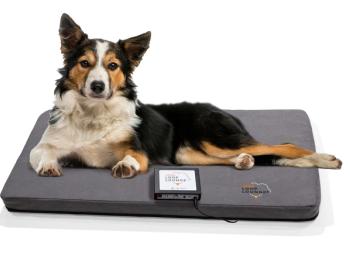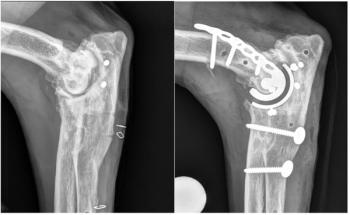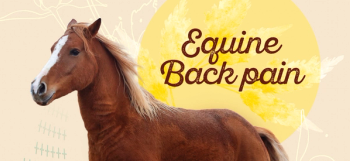
How to make a soaker-type catheter
Use sterile scissors to remove the tip of a red rubber catheter proximal to the large hole at the distal end, cutting the catheter to the desired length.
The following materials are needed:
- 3.5-, 5-, or 8-F red rubber catheter
- Sterile scissors (Mayo/sharp-blunt)
- Sterile Halsted mosquito forceps
- Heat source, such as a cigarette lighter
- Sterile 3-ml syringe
- 27-ga needle (found on insulin syringes)
- Sterile infusion plug
- Sterile gloves
- Sterile drape
Step 1. Use sterile scissors to remove the tip of a red rubber catheter proximal to the large hole at the distal end, cutting the catheter to the desired total length.
Step 2. Seal the distal end of the catheter with mosquito forceps and a heat source either by clamping the end of the catheter with forceps and having a nonsterile assistant heat the instrument a short distance from the catheter or by heating the forceps and then clamping the catheter with the hot tip. Avoid heating the catheter directly as it will char and possibly catch fire. In addition, conduct heat or open flame application away from oxygen sources or other combustible gases.
Step 3. Attach an infusion plug to the proximal end of a red rubber catheter, and check for a secure seal by attaching a 3-ml syringe and pushing a small amount of air into the catheter. If there are no leaks, the plunger of the syringe should bounce backward.
Step 4. Use a 27-ga needle (on an insulin syringe) to make holes in the red rubber catheter. The needle can go through both sides of the catheter, making two holes with each stick. Rotate the catheter slightly so that holes are placed 360 degrees around the catheter. The holes should be about 5 mm apart, and be sure to consider the length of the fenestrated part of catheter so that all holes will be situated within the area of interest. Make sure not to poke through sterile drapes or gloves. Attach the infusion plug to the open end, and preload the catheter with the local anesthetic of choice. Ensure that the local anesthetic is coming through the holes before placing the catheter in the patient.
Christine Egger, DVM, MVSc, DACVA; Lydia Love, DVM, Department of Small Animal Clinical Sciences College of Veterinary Medicine The University of Tennessee Knoxville, TN 37996
Newsletter
From exam room tips to practice management insights, get trusted veterinary news delivered straight to your inbox—subscribe to dvm360.






